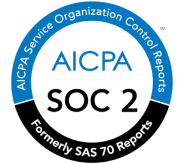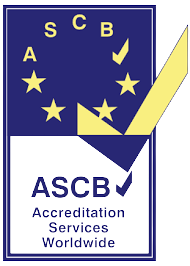Table of Content
- Introduction
- What is talent mapping?
- How to execute a talent mapping and development plan in your organisation smartly?
- Identify the most important and influential roles in your organisation.
- Create a mindmap or an inventory of the skills and potential of all employees.
- Assess the current performance and potential of the employees using a 9-box grid.
- Find out the current skill gaps.
- Help your teams develop their career paths and learning curves.
- Monitor their growth continuously to promote and praise them on time.
- What are the benefits of running and executing an online talent mapping plan for HR leaders?
- Conclusion
- FAQs
Introduction
HR needs to step into the talent mapping and development process regularly with in-depth knowledge of the current job market and the skill set required by the industry.
They must sharpen their talent mapping process and approaches to get the right talent in the organisation to shape the future of the culture and work for the entire team or business unit.
Talent managers dive deep into strategic workforce planning strategies to act as guides, mentors, or coaches to employed individuals. They come across as the next support to the managers to ensure that the organisation is providing the right platform and tools for reskilling.
If you’re one of these HRs or a reporting manager, read the post below. You will get the basics of workforce planning right from your day one to the last.
That way, you will always be ready to take on new tasks when it comes to developing new talent, internal mobility, and creating a legacy for the strategic partners in the organisation without increasing the operational cost.
Also read: Role of HRMS Software in Talent Management in India
Want to skip the post?

What is talent mapping?
Talent mapping and development is an assessment of the current and potential of current and upcoming employees’ skills within an industry.
It includes strategies like:
- Defining talent management strategies.
- Finding the right talent for your firm and a specific role on time.
- Retaining the best performer in your firm.
- Reskilling talented individuals in your firm gradually and consistently.
Talent managers follow or execute these strategies to pace up the speed at which every individual is learning new skills. Today, we all recognise that we are living in a brittle, non-linear, and incomprehensible world of work.
So, it has become even more important for the talent manager to focus on reskilling and upskilling the individuals based on their current performances and future growth potential.
That way, organisations, as ever-growing communities, are developing the most appreciated, recognisable, and indispensable talent at all times.
Creating a legacy for the new-age managers, supervisors, and later boomers in the workplace would not be difficult when HRs rightly plan and execute the succession planning tactics from the beginning.
How to execute a talent mapping and development plan in your organisation smartly?
Identify the most important and influential roles in your organisation.
The first step while creating a talent roadmap for your staff is to identify the critical roles in your organisation. Identify why certain roles are critical and what kind of skill sets and expertise would be required to carry those roles.
You can use our tool, AI Suggest, if you are a recruiter, to generate skill sets, interview assessment questions, and the latest KRA template for such critical roles in seconds.
Create a mindmap or an inventory of the skills and potential of all employees.
You can either create a skill-will matrix in your organisation or focus on the most important skills every employee must possess. This gives you the benchmark of the culture you want to develop for everyone you hire next in your team or the business unit.
Discuss the skill set, expertise, and experience required to be the best in one’s role. Get it approved by upper management or the Chief People Officer.
As a recruiter, this knowledge and checklist helps you hire, train, and coach the best individuals ahead of time when you plan to create a legacy and execute the best succession planning roadmap.
Assess the current performance and potential of the employees using a 9-box grid.
Strategic workforce planning takes shape when you know the current performance of your staff and map it with their future potential. We offer you the 9-box grid theory/concept/model or visualisation in the personalised dashboard.
From there, you will know the category to which your concerned employee belongs. Then, you can act and manage them well to convert them into high performers or stars as soon as possible.
Also, this grid gives you a clear picture of who else can be your protege in the organisation to take the baton ahead and break benchmarks to achieve greater milestones in the next quarter.
Find out the current skill gaps.
You can use AI Suggest to generate a checklist of skills required for a specific role. Then, match it with the current skill set of your concerned employee or team. Otherwise, let there be a 360-degree review to complete the performance evaluations.
This evaluation helps HR managers know what everyone else is thinking about the talented person and how to motivate them to exercise their full potential and close the skill-will gap.
You can use the HR calculator as well, which we provide to our HR fraternity members. HRs can check how optimised their processes are with the help of this calculator. It will give you suggestions to follow a roadmap to improve the potential and performance of your current staff for better business performance and scalability.
Help your teams develop their career paths and learning curves.
When you identify the skill gaps, you now have a checklist of addons to be added to an employee’s profile. Now, deduce the timeline, budgets, and costs that your organisation can spend or invest in skilling up and reskilling the staff.
Provide exceptional learning material and experience to your staff with LXP - learning experience platforms. We offer eLMS, a super interactive LXP for your remote and hybrid teams.
It allows reporting managers to upload training sessions in different formats or extensions. Managers can also allow or revoke permissions for an individual to enrol in a course. The individual will get a system-generated certificate upon completion to add to their portfolio.
Monitor their growth continuously to promote and praise them on time.
Keep track of the skills, goals, KRAs, or KPIs achieved with our mobile-enabled performance management system. Know if your current staff is working as per the career learning paths and is delivering projects on time without messing up the quality.
Keep track of their sentiments, engagement levels, absenteeism rates, etc., to know if your employees are working sincerely for the betterment of all or not.
What are the benefits of running and executing an online talent mapping plan for HR leaders?
- Build a disciplined organisation.
- Have more clarity on who is performing better than the rest.
- Know whom to promote, praise, or reward with incentives and at what time.
- Employees become change-ready to tackle more projects at the same time.
- Bridge skill-will gaps before the next wave of new-gen skills takes place.
- Empower your employees with the right tools and programs like LXPs or eLMS to become self-reliant and self-serving.
- Bring in more autonomy of tasks as employees become more responsible for completing projects on time.
- Drastic improvements in employee retention, satisfaction, and productivity.
Conclusion
The talent mapping and development guide above shows you the steps to curate the best plan smartly while incorporating HRMS like ours. It also briefly highlights the top 8 benefits of consistent execution of the succession planning or talent mapping process.
If you’re an HR, you might want to conduct workforce planning yourself and create dream teams flawlessly. So, trust uKnowva and do it at your fingertips or on your smart devices while on the move.
FAQs
Q: How often should talent mapping be revisited and updated?
A: Regular reviews, ideally annually, are crucial to keep talent maps current. Changes in business strategy, market dynamics, and internal restructuring may necessitate adjustments to the talent mapping strategy.
Q: Can talent mapping benefit small and medium-sized enterprises (SMEs)?
A: Yes, talent mapping is valuable for SMEs, helping them plan for growth, identify key roles, and ensure they have the right talent to meet evolving business needs.
Q: What challenges might HRs face in talent mapping and development?
A: Challenges can include data accuracy issues, resistance to change, and the dynamic nature of talent markets. Effective communication and flexibility are key to overcoming these challenges.
Q: How can HRs ensure the inclusivity of talent mapping and development initiatives?
A: Ensure that talent mapping considers diversity and inclusion goals. Implement inclusive hiring and development practices and provide equal opportunities for employees from various backgrounds to grow and advance within the organisation.












